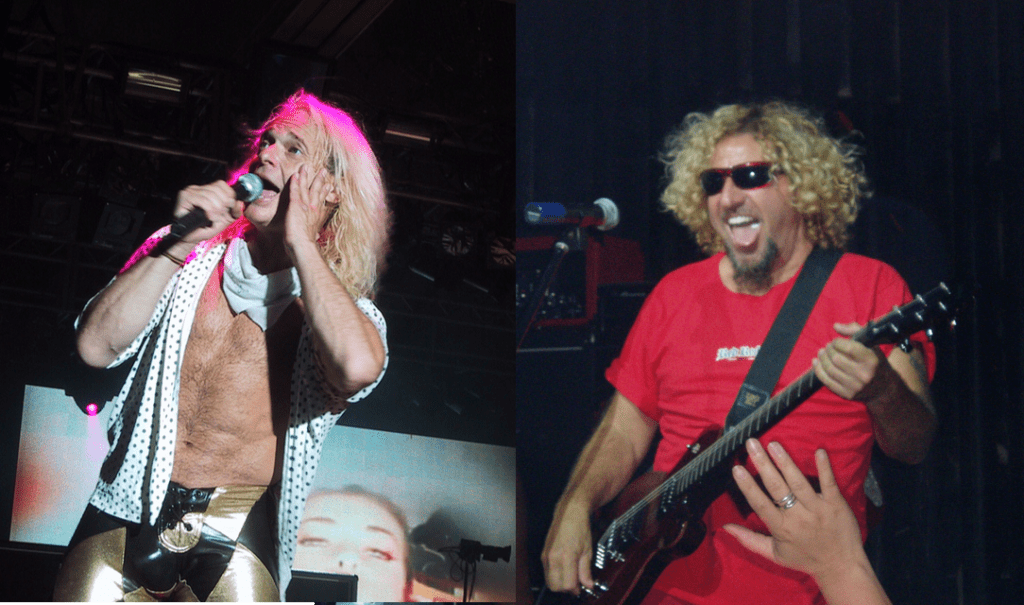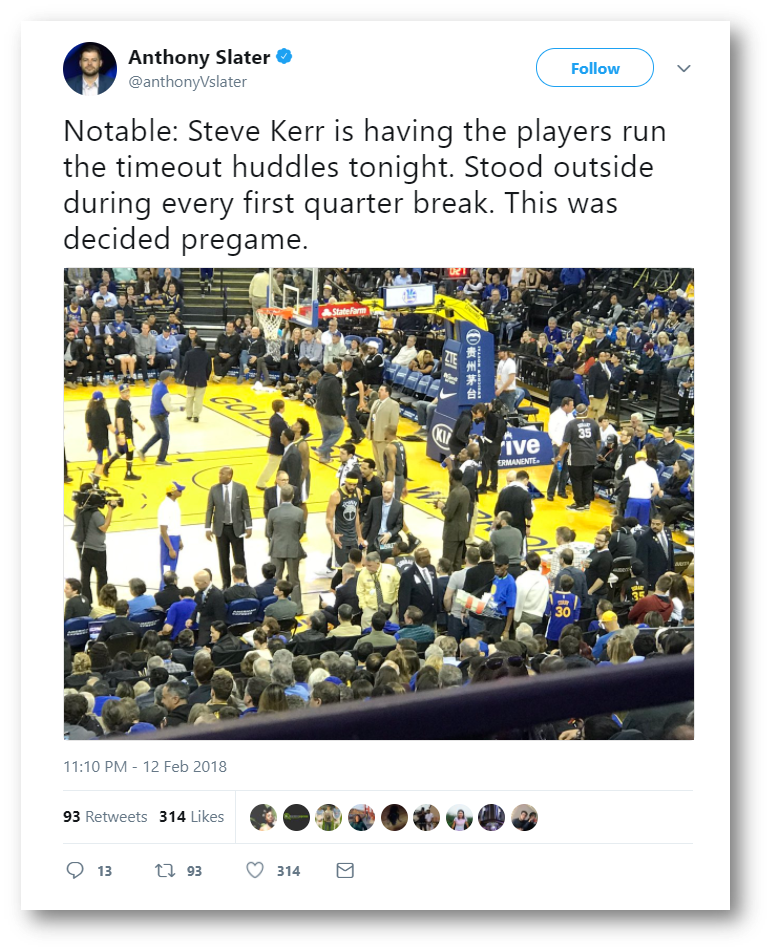 Over the weekend, I had a mini-epiphany.
Over the weekend, I had a mini-epiphany.
It started on Thursday when my brother, Paul – “the sales guy” – wrote a guest post for this blog. It was called “What’s Your Sales Story?” and I’m linking it here in case you missed it.
Paul warned me when he emailed me the draft that sales posts rarely work especially well with you. And he’s right. Blog posts about personalities, for example, tend to generate many more page views than posts that deal with radio sales.
But his post ended up attracting more eyes – and “shares” – than any we published last week. It was forwarded onto many sales organizations. Paul received several emails, complimenting him on the post, and informing him that it was sent throughout organizations as an example of a creative approach to motivating the sales staff.
In the post, Paul talked about a little sales exercise he cooked up more than 30 years ago. The idea was to devote a day to having the sales reps actually work for their biggest clients – flipping burgers, delivering beer, etc. And as it turned out, Bacardi had recently instituted a similar exercise among its entire 5,500 employee base.
Now, don’t get me wrong. This was a great idea when Paul thought of back in the ’80s, and it obviously still resonates today. But it also told me there’s a lack of creativity in the sale cubicles. And it doesn’t have to be that way. In a sales environment that’s lagging, there are certain “givens” that simply can’t be controlled by a local staff of sellers. But a great, attention-getting idea can ignite the reps – and their clients – as Paul’s blog post proved.
And it’s not just in sales. Radio is an industry bereft of new thinking. Oh sure, there are the innovations – the Alexa skills, podcast initiatives, and mobile apps. But so many of us have done the day-to-day stuff the same way for so long we’ve gotten caught up in the routine, the groove, the rut. Paul’s blog post was a reminder to me the same problem impacts the programming department, too – and it has for a long time.
Flash back to 2002, and impresario Irving Azoff came up with the creative idea of what became known as the “Sam & Dave Tour” – pairing the often volatile lead singers of Van Halen, David Lee Roth and Sammy Hagar, for a co-headlined concert tour that would be guaranteed to spark controversy.
to spark controversy.
The idea electrified rock radio, always in search of a novel concert attraction, not to mention a tour that would spew a lot of gossip and finger-pointing – reality TV, live on stage every night.
Our company was brought in to assist with helping select promotional concepts designed by rock stations all over the country, in markets major and small. PDs and promotion directors had submitted their ideas, and it was our job to vet them, search out the most creative ones, and help the tour ignite.
When we sat down with dozens and dozens of forms containing these ideas, we were excited to see what programmers and marketers from around the country came up with.
And that was rapidly followed up a sense of disappointment, and even a little despair. That’s because so many of the concepts were the “same old” rehashed ideas, many of which probably were derivative of things Lee Abrams and John Sebastian were suggesting to their “AOR” clients back in the ’70s.
First, there was the “5-4-3-2-1” concept – giving away a pair of tickets in the fifth row Monday, the fourth row on Tuesday…culminating in a pair of valued front row seats on the last day. Wow.
Then there was the old “Win ’em before you can buy ’em” idea, an early set of giveaways designed to rev up interest in the “Sam & Dave” tour. Woo hoo.
And finally, multiple ticket giveaways each day at memorable times like 9, 2, and 5 or 7:20, 10:20, 2:20, and 5:20. Really?
After spending an hour paging through these tired proposals, it was impossible not to be embarrassed by the lack of creative energy displayed by rock radio.
Let’s not forget that even 16 years ago, stations were under pressure to do more with fewer people. And undoubtedly, many also were pressed for time, having to fill out multiple promotional requests.
But it was also clear that few (if any) of the stations whose promotional ideas we reviewed took the time to convene a 15 minute brainstorm among key members of the programming staff to come up with something novel, riveting, or creative.
And that was the same takeaway I had with Paul’s blog post last week. His idea was a clever one, hence so many sales organizations responding positively to it. But it was a reminder that a basic ideation exercise among the reps and other employees might have yielded something just as good – or even better.
 Radio is no longer in the position of being able to mail in a last century idea if it intends to successfully compete against the many new content and marketing options available to both consumers and businesses. When even some of the biggest companies are running essentially the same “collective contest” in hundreds of markets throughout the country, something is being lost in the process. Somehow, radio is going to need to dig a little deeper in order to stand out, and successfully provide proof of concept for a medium that’s been around for nearly a century.
Radio is no longer in the position of being able to mail in a last century idea if it intends to successfully compete against the many new content and marketing options available to both consumers and businesses. When even some of the biggest companies are running essentially the same “collective contest” in hundreds of markets throughout the country, something is being lost in the process. Somehow, radio is going to need to dig a little deeper in order to stand out, and successfully provide proof of concept for a medium that’s been around for nearly a century.
And we’re not alone. Legacy businesses are under similar pressure to try different things in order to stand out. Of course, I default to the world of sports from some key analogies.
The first of which is the magnetic head coach of the amazing Golden State Warriors of the NBA. Steve Kerr is that guy in the enviable and unenviable position of trying to motivate his team of talented multi-millionaires to take home another ring. If you’ve been lucky enough to program a radio franchise like Z100, WDVE, or KMOX, you know the angst that winning coaches experience. 
How do you continue to coax and cajole your team to play at a consistently high level when they’re convinced they’ve got the goods, and they can turn on the jets at the beginning of the fourth quarter to pull out the win?
In late January, the Warriors suffered through a mini-slump. And their notorious slow starts were making Kerr crazy. Noting to Yahoo! Sports the team was “mentally fried right now” and “tired of my voice,” he let the Warriors coach themselves against a low-risk performing Phoenix Suns team.
The creative exercise worked – the players were excited and energized (they won the game in a blowout), and equally notable, fans reacted, too. Finally, there was something to watch in a mundane, almost meaningless regular season matchup between two teams struggling to get to the All Star break.
But the malaise in sports goes well beyond a frustrated coach and his jaded players. The entire industry is experiencing falling attendance, as more of us choose to watch games in the comfort of our media rooms and bars.
What’s the elixir that will persuade fans to pony up hundreds of dollars to drive downtown or to the neighboring town to watch a game in person?
You can bet that pro sports teams are conducting a lot of brainstorms these days – something we in radio can learn from.
Tomorrow’s post will look at what legacy sports franchises are doing to instill excitement in the game experience. And how all that applies to another traditional form of entertainment – broadcast radio.
- DJs And Baristas: Can They Save Their Companies? - May 2, 2025
- Radio’s New Audience Equation: Z Over Y = Trouble - May 1, 2025
- What Is It With Female Robot DJs? - April 30, 2025




Excellent post, Fred. Your sports analogy is right on point. I’d direct your attention to Terry Pluto’s column from this past Sunday on Cavs owner Dan Gilbert, who talked about his business strategy. As you well know, Gilbert’s a big investor in revitalizing Detroit. He has created business synergy by linking the Cavs to Quicken Loans to Quicken Loans Arena, to the Jack casino. They all feed off each other. Quicken Loans, the mortgage company, is a Cavs advertiser, as is the Casino. That’s what enables him to spend $150 million over the salary cap on players. His empire is $6.5 billion! Gilbert says, “a penny saved is still a penny.” Radio stations can create synergy by building cross-promotional activities and events that draw customers/listeners (always customers first). We did it for a decade in Lima, Ohio. We created and produced more than 50 live promotions that drew customers, sponsors, media coverage–synergy! Our advertisers didn’t buy from us because we were the #1-rated station (we were never). They bought from us because we had the ability to bring customers in direct contact with their businesses, whether it was a Rib Cook-Off, a Business Expo, a food show or a fitness fair; we used hours of our own inventory to promote the events. We bought media everywhere else and we delivered on our promise to our advertisers (who bought booth space or sponsorships), that we would improve their bottom lines if they put their trust in our hands. We did and they did. Some of our advertisers signed to packages at the beginning of the year that included spots, sponsorship, booth spaces, printed program ads and more–all in one big package that was worth 10 times what they paid for it– and worth double or triple what we would have gotten if we were just selling “spots.” Without that synergy we would have been out of business before we ever got started. I’m disappointed, but not surprised, that more stations–and especially the mega-chains–haven’t taken up the opportunity. There’s more to it than I-Heart’s Jingle Ball. Don’t piggy-back on someone else. Be the pig and carry a few of your best customers along so they can share in the success!
I love the results-focused strategy, Marty. That’s a philosophy that can keep stations inoculated from ratings disasters. I am also stealing the “Be the pig” line. You have to think big to win in this environment. Appreciate you weighing in.
Steve Kerr gets it! He’s a former player, terrific coach (and an extremely nice guy too.) This all reminded me of when I had members of my air staff take turns leading our weekly jock meetings (a great way to get everyone involved and see potential leaders!) Our brainstorm meetings were beyond fun and very productive. I recommend them to anyone needing to build some teamwork. To reinforce one of the most important rules in brainstorming (“no bad ideas”), we handed out squirt guns and if anyone groaned or found something wrong with an idea, they got squirted by everyone!!! You never know what may come from someone’s idea. So everyone must have an open mind.
(Also, most important in brainstorming…delegate one person to take notes on everything!)
Mike, great idea and a great story. It’s not hard (or dangerous) to empower your staff, turn the tables, and glean strong ideas in the process.
The brainstorm has been done. Well, here in Florida anyway. I’ve got something new and different. In fact, I believe it is the future of talk radio. It’s called the Action Radio Citizen Legislature. This is “Action Radio” where we take action, combined with a citizen legislature where we write our own bills on the air, and get them to our Congressman, Rep. Matt Gaetz of Florida. More Congress members will be contacted soon, as will State Legislators. The website is WriteYourLaws.com. We combine the internet, social media especially Facebook, videos, articles, legislators, executives hopefully to include the President, the radio audience, citizen legislators, and coordinate them all through my show. We are ready to syndicate the show throughout the country when the opportunity presents itself. More information below:
“At ACTION RADIO We Don’t Report the News… WE ARE THE NEWS!!!”
This is “About Us” from the website: https://writeyourlaws.com/about-us/
Facebook page: https://www.facebook.com/radiolegislature/
Here is a sample interview:
https://soundcloud.com/user-682304310-398034918/my-interview-with-dr-walter-williams
Here is my best interview video: https://datechguyblog.com/tag/greg-penglis/
Here is the website: https://writeyourlaws.com Here is how it works.
1. Click on “Legislation” on the Main Menu Bar beside the red “Home” symbol.
2. “Propose a New Law.” This is where anyone can submit a bill idea.
3. “Citizen Bill Ideas.” This is where all those ideas go to be voted on, commented on, and put into bill form.
4. “All Proposed Laws.” This is where the best of Citizen Bill Ideas go to be further commented on, voted on, and finalized for submission.
5. “National, State, Local.” This is where bills go when we are submitting them to the appropriate legislature. Once bills are accepted, a government tracking link will be added so we can follow our bills through the normal legislative process.
On my show we talk about the bills, write bills from ideas by callers, make connections with officials to help with the bills, and coordinate Action Radio through my show, the internet, social media, legislators of all levels, journalists, media executives, advocacy groups, and more.
Once the bills have been accepted by a legislature they will get an internet tracking link, then lobbying and national/state/local attention from us, and every other host across the country, as we build the National Action Radio Network.
Here is the page of bills I have submitted to US Rep. Matt Gaetz:
https://writeyourlaws.com/category/proposed-laws/
Here is the governing principle of Action Radio:
“We the People, Give Our Consent to be Governed, Through Writing the Laws by Which We are Governed.” Greg Penglis.
Cheers,
Greg Penglis
The First “Action Radio” Host
1330 AM WEBY Radio
https://writeyourlaws.com
https://www.facebook.com/radiolegislature/
http://www.1330weby.com
Greg, with it’s different – crowd sourcing, the law, and radio. Keep us in the loop as Action Radio rolls out.
I’m sorry for the delay in answering. As for Action Radio, It has been rolled out for months. We have some 15 bills written by citizens on U.S. Rep. Matt Gaetz desk. Here is the specific site for those:
https://writeyourlaws.com/category/proposed-laws/
I’m hoping some will be filed with Congress soon. We have a wealth management expert who wrote a bill to eliminate Welfare in 25 years. We have a Hispanic immigrant woman who wrote a bill requiring electronic fingerprint verification at all polling places. I have bills eliminating the Withholding Tax and Judicial Review, and creating a Department of Freedom for the Federal Government. We have more ideas, and more answers to questions that no one else has thought to ask.
At ACTION RADIO We Don’t Report the News…
“WE ARE THE NEWS!!!”